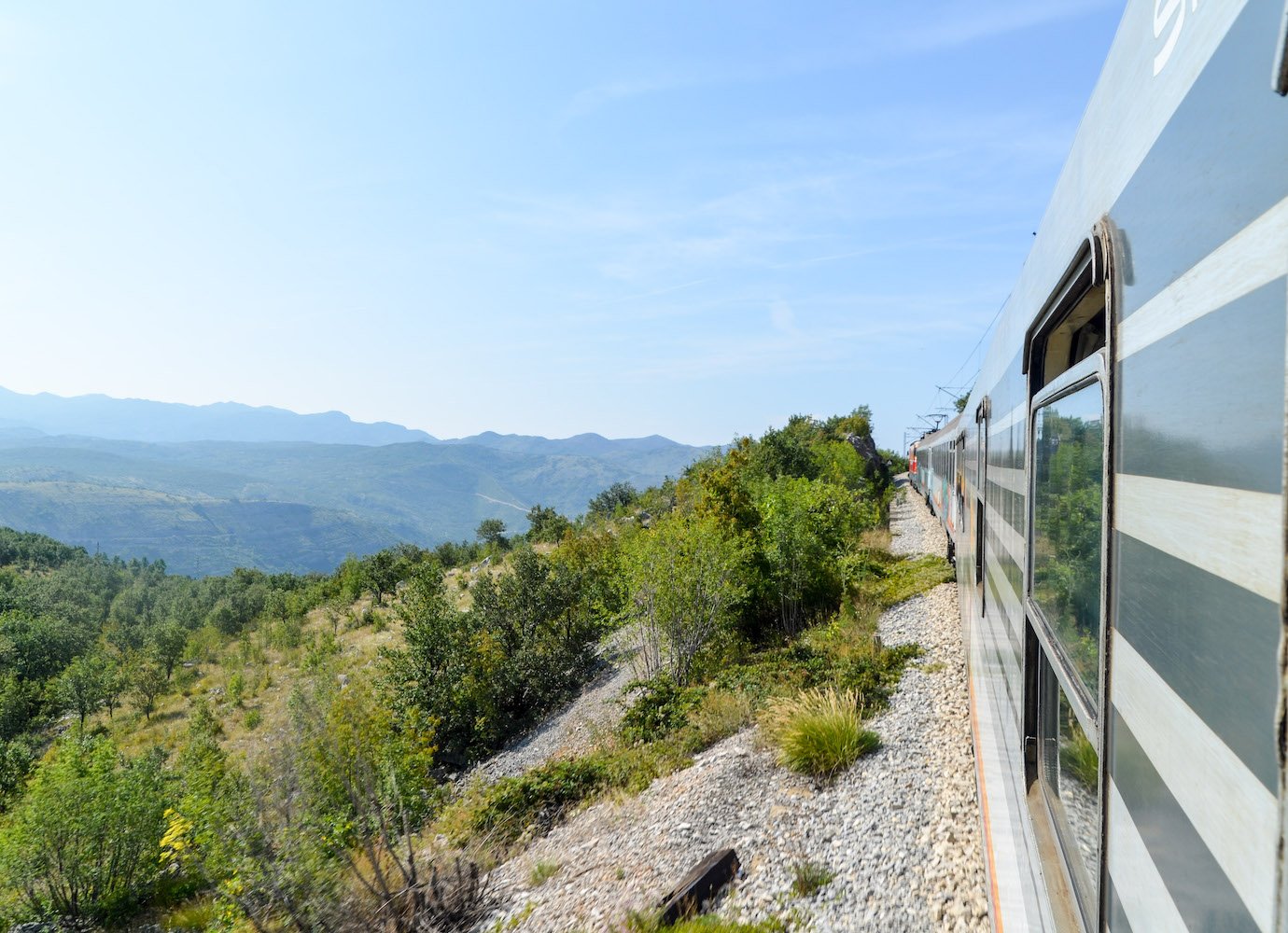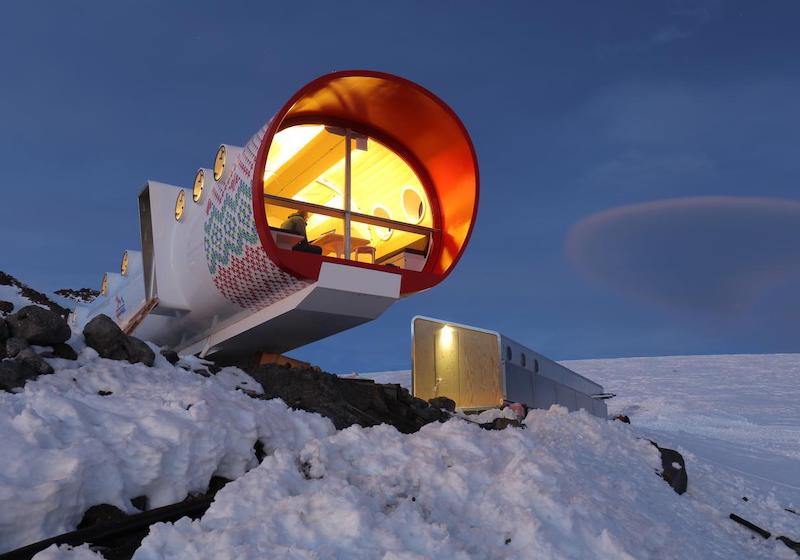10 lesser-known nature escapes in Eastern Europe and Central Asia
As summer draws to a close, we’ve selected some of the most beautiful and unexpected nature getaways for scenic holidays away from the crowds.
Hiiumaa, Estonia
Hiiumaa. Image: Sergei Gussev under a CC license
If you’re looking for an alternative nature getaway, Hiiumaa, Estonia’s second largest island, may just tick all the right boxes. Surrounded by the bracing waters of the Baltic Sea, Hiiumaa is a paradise for sailors, hikers, and surfers. For most international travellers, the easiest way to the island is to take the ferry from Tallinn. From there, you can rent a room in the charming main town of Kärdla, and venture out to the island’s sandy beaches. Don’t forget to stop by at the Kõpu Lighthouse, which dates back to the 16th century and is one of the best-known landmarks on Hiiumaa.
Ideal for the autumn months, Hiiumaa is sunnier and less rainy than mainland Estonia. At the end of a long day exploring, treat yourself to a pint of local Hiiu beer and a plate of the local delicacy: smoked fish.
Tatra Mountains, Poland and Slovakia
Tatra mountains. Image: Barnyz under a CC license
Rising from the plains of Poland and Slovakia to the sublime snow-capped pinnacles of the Carpathians, the UNESCO-protected Tatra National Park is full of untouched landscapes for nature-lovers and adventure-seekers alike.
The mountains are a year-round attraction, offering kilometres of stunning hiking trails, ski slopes, camping spots, and climbing-friendly rock formations. The Polish town of Zakopane, just a two-hour drive from Kraków, is the perfect base for a relaxed nature getaway, while the Slovak side offers more dramatic hiking trails.
Ala Archa National Park, Kyrgyzstan
Ala Archa. Image: Martin Talbot under a CC license
In the heart of Kyrgyzstan’s Tian Shan mountain range, Ala Archa National Park is an oasis of rugged natural beauty. The park covers more than 200 sq km, ranging across altitudes of 1,500m at the entrance to 5,000 at Semenov-Tian-Shansky Peak, one of Kyrgyzstan’s tallest mountains.
Located just 40km south of the capital, Bishkek, the park is good for a one-day trip by car, private taxi, or with an organised tour. Although hiking is easier during the spring, summer, and autumn months, if you visit the park in winter, you’ll see dramatic snow-capped peaks — and, if you are lucky, you may spot one of the park’s rare snow leopards.
Plitvice Lakes, Croatia
Plitvice Lakes. Image: Patrick Müller under a CC license
Found in the heart of Croatia, the Plitvice Lakes National Park boasts infinite square kilometres of waterfalls and cascading lakes hidden beneath otherworldly lush hills. The UNESCO world heritage site can be easily visited in a day trip from the capital, Zagreb, or from the coastal town of Split, but it deserves at least a few days of your time to take in all it has to offer.
Swimming in the lakes is forbidden, but the park does offer a myriad of hiking trails and stunning viewpoints. October — when the leaves are gold and the water turns bright turquoise — is particularly beautiful. Alternatively, a winter escapade to the lakes will grant you snow-covered, Christmas-postcard sights.
Danube Delta Biosphere Reserve, Romania
Danube Delta. Image: Mihnea Tanasescu
As the mighty Danube river reaches the Black Sea, it splits into the Danube delta — a sprawling, beautiful expanse of man-made waterways, reeds, and unspoilt beaches. The closest city is Tulcea, but there are plenty of accommodation options in the heart of the reserve that offer an outdoor immersion at very affordable prices.
The delta itself is home to hundreds of species of birds and fish, kilometres of reed marshes, and secluded beaches. Accessible by foot or boat, the shores are an oasis of peace and quiet, particularly in the autumn months, when the summer heat has waned, the wildlife prepares for the winter months, and the lush marshes turn ochre. And as if the stunning landscape wasn’t enough, the fish and seafood in the area, particularly the fish soup, are claimed to be the best in Romania.
Lake Ohrid, Macedonia
Lake Ohrid. Image: charlieontravel.com
The crystal clear waters of Lake Ohrid, on the border between Albania and Macedonia, make for a cooling late summer destination. Stay at the Macedonian town of Ohrid, which, with its Ottoman architecture and myriad of Byzantine churches, is the perfect base to discover the area. When you’ve finished exploring the town’s rambling maze of cobbled streets, the lake is the perfect place to unwind and relax, either at one of the Ohrid’s many lakeside cafes or one of the beaches a little further out of town. The St Naum monastery on the Albanian border and the remains of the town’s local castle both make great trips: especially when followed by a trip to Ljubaništa beach to watch the sunset over the waves.
Burabay Nature Reserve, Kazakhstan
Burabay Nature Reserve. Image: Aleksandr Karpenko under a CC license
Contrary to popular perception, Kazakhstan’s scenery offers more than just the expanses of the steppe. Often described as the “pearl of Kazakhstan”, Burabay National Park is a vibrant patchwork of pine forests, lakes, flora and fauna, and intriguing rock formations. Take a rowing boat out on Lake Burabay and travel from Goluboy Zaliv to reach Zhumbaktas Rock — the birthplace of several Kazakh legends — or, if you’re feeling in good shape, brave the climb to the region’s highest peak, Mt Kokshetau. Meanwhile, a rather more gentle hike that still offers beautiful vistas of both Lake Burabay and its neighbour Lake Bolshoe Chebachie is the walk to the summit of the nearby Bolektau.
Easily accessible from the country’s capital, Nur-Sultan, visitors in Burabay come not just to stand in awe of nature, but also to let it work its mysterious magic: the park is a popular place for medicinal tourism, owing to the supposedly healing qualities of its pine and birch trees.
Ksamil Islands, Albania
Ksamil Bay. Image: Artur Malinowski under a CC license
The Ksamil islands are an archipelago in southern Albania accessible only by boat (or a swim if you’re feeling energetic). They feature some of the country’s most unspoiled beauty, with peaceful beaches and tranquil waters.
The village of Ksamil is situated south of Saranda, the unofficial capital of the Albanian riviera, and is not far from the Albanian-Greek border. In fact, it’s so close to Greece that it makes more sense to fly to Corfu and take a boat to get to Saranda, as a bus from Tirana will take about five hours. From Saranda, there are regular buses to Ksamil, which is located inside Butrint, a national park with its own fascinating ecosystem and the remains of an ancient town. To escape the crowds, hire a boat and go to one of the three Ksamil islands, which are a short sail away and are usually less busy. The fresh local seafood is a must-try, so plan an evening beach picnic of take-away grilled fish or prawns, and pick up a bottle of cold Spumante from a nearby shop.
Durmitor National Park, Montenegro
Durmitor National Park. Image: Marco Verch under a CC license
Montenegro’s Durmitor National Park is often overlooked by tourists, but the UNESCO World Heritage site is well worth a visit. While the towering central massif (reaching more than 2,500 metres high at its peak) might dominate the landscape, the real attraction is the plunging Tara river canyon. Forged by the Tara river, the canyon is the second largest in the world, beaten only by the Grand canyon itself.
The river changes from clear blue to thrashing white rapids that attract rafters from across Europe. If you want to have a go paddling through the water for yourself, then the town of Zabljak is the centre for different tourist activities throughout the park. If you’d rather walk, you can take a meandering route through the different lakes scattered through the hills, or track down traces of the battle which raged here during the Second World War.
Curonian Spit, Lithuania
The Curonian Spit. Image: Vadim under a CC license
Split between Russia and Lithuania, the Curonian Spit offers giant sand dunes, quiet fishing towns and kilometres of unspoiled beauty. The best way to reach the Lithuanian side of the peninsula and avoid Russia’s strict visa requirements is by ferry from Klaipeda, a Lithuanian coastal town.
The most popular resort on the Curonian Spit is Nida, a 14th-century town on the Curonian lagoon shores. Due to the fragility of the peninsula’s natural landscape, Nida hardly has any tourists, as the supply of accommodation and hotels is limited. Be sure to book in advance.
On warmer days, you can swim on the lagoon or at the peninsula’s remote beaches. On colder days, you can trek around the area on designated paths. Locals recommend assembling a picnic of local delicacies like smoked fish, rye bread, and beer, and heading to the Parnidis Dune just outside of Nida. Rising to 52 metres, the sunset over the peninsula and the sea from this spot is spectacular. There is also a campsite near Nida, and a nudist beach on the Baltic Sea shore if that’s your vibe.


